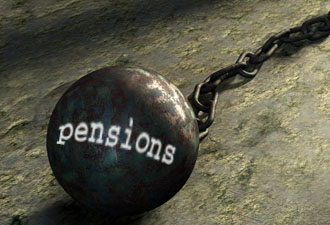Media
Did Lawmakers Fix the Pension Mess?
 Joe DiStefano of the Philadelphia Inquirer writes that State Representative (and PSERS Board member) Dwight Evans claims no further pension reform is needed. Evans is hardly dealing with reality.
Joe DiStefano of the Philadelphia Inquirer writes that State Representative (and PSERS Board member) Dwight Evans claims no further pension reform is needed. Evans is hardly dealing with reality.
The charts below, obtained directly from PSERS, show that under HB 2497/Act 120, the unfunded liability will be much higher. How is reducing contributions to already underfunded pension plans celebrated and considered reform? Further, as we’ve pointed out, and as noted in a Wells Fargo report on Pennsylvania’s fiscal situation, reduced taxpayer contributions over the next few years will be made up for with higher contributions in the 2020s and 2030s. The AP has reemphasized this point with a recent story on how contributions will still have to average $5 billion over the next 10 years, up from about $1 billion this year.
DiStefano also wrote that Evans will rely on dramatic stock market returns to fix the pension crisis:
Evans also expects the stock and bond markets will recover, pushing investment values higher and reducing the actual need for greater subsidies: “The markets have always come back in the past,” he said.
The current projections assume 8% annual return, and the funds will have to return more than that to make up any of the gap. Yet a Pensions and Investors article suggests that the funds face a looming liquidity crisis—that is, continued underfunding requires PSERS and SERS to put money into more liquid investments in order to pay out benefits. These investments typically produce lower investment returns.
In fact, PSERS is calling a special board meeting on January 19 to review actuarial funding assumptions. I believe one action likely to be adopted by the PSERS Board will be to lower the assumed rate of return, which will increase the projected unfunded liability.
We identified 13 reasons to oppose HB 2497; to date no one has refuted a single reason. This “non-reform” bill only made matters worse, and does not begin to deal with municipal pension reform involving the approximately 2,200 defined-benefit plans statewide.